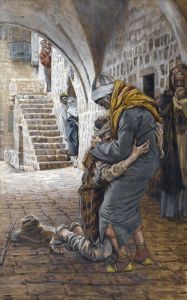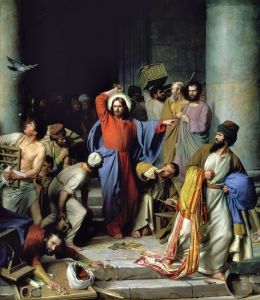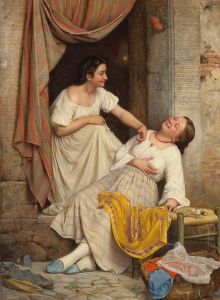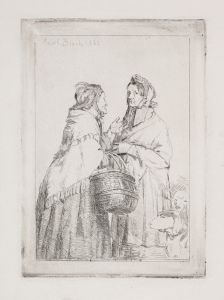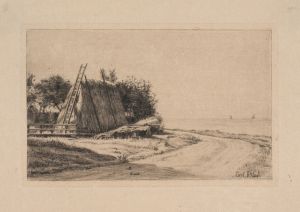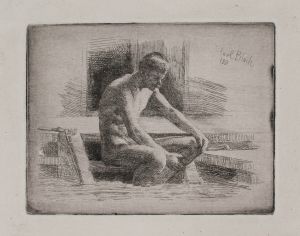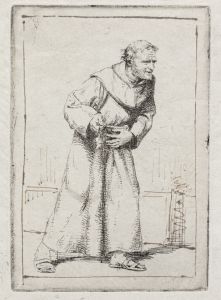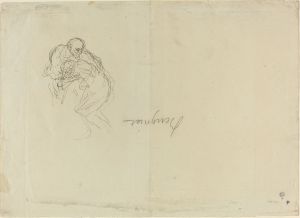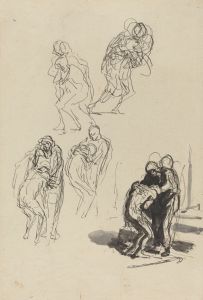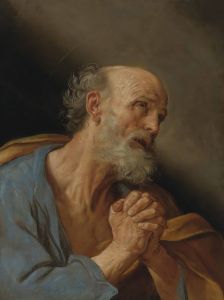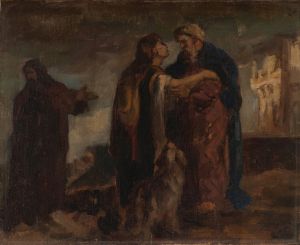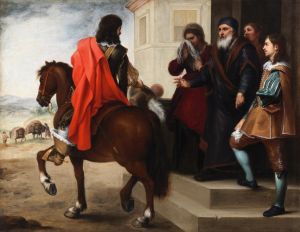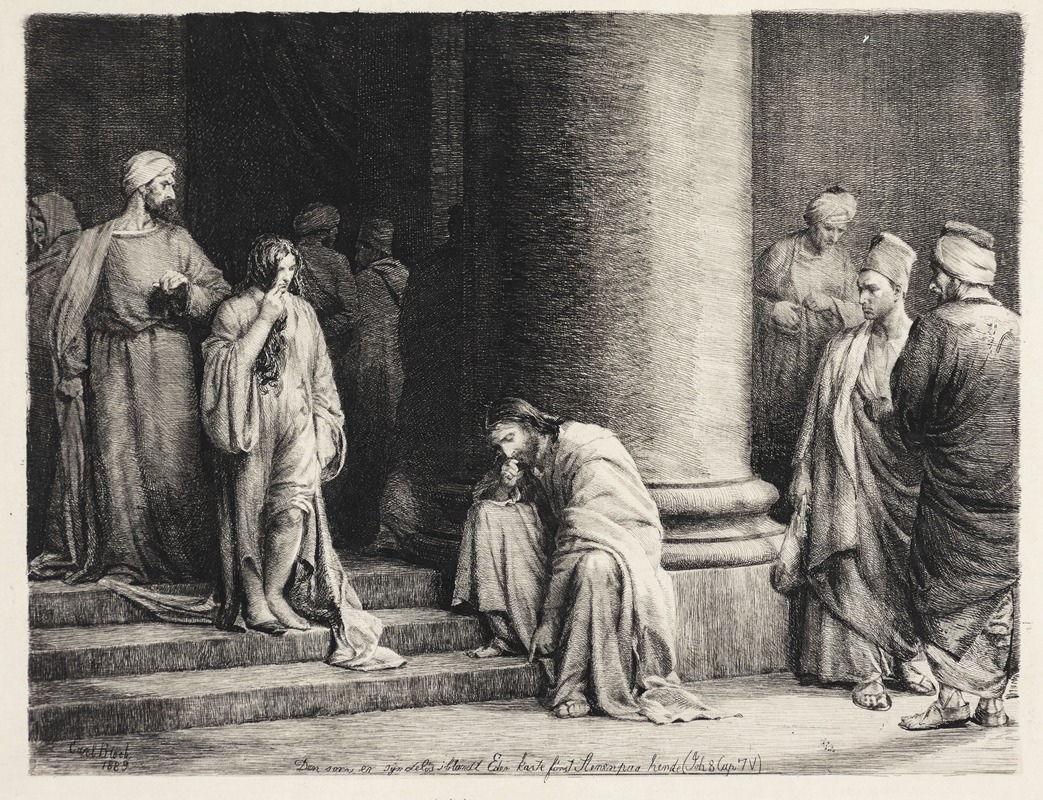
Kristus og Synderinden
A hand-painted replica of Carl Bloch’s masterpiece Kristus og Synderinden, meticulously crafted by professional artists to capture the true essence of the original. Each piece is created with museum-quality canvas and rare mineral pigments, carefully painted by experienced artists with delicate brushstrokes and rich, layered colors to perfectly recreate the texture of the original artwork. Unlike machine-printed reproductions, this hand-painted version brings the painting to life, infused with the artist’s emotions and skill in every stroke. Whether for personal collection or home decoration, it instantly elevates the artistic atmosphere of any space.
Carl Bloch's painting Kristus og Synderinden (translated as Christ and the Woman Taken in Adultery) is a significant work by the renowned Danish artist Carl Heinrich Bloch (1834–1890). Completed in 1868, the painting is one of Bloch's many religious-themed works that have earned him recognition as one of Denmark's most important 19th-century painters. The artwork is based on the biblical account found in the Gospel of John, chapter 8, verses 1–11, which tells the story of Jesus and the woman accused of adultery.
In this narrative, the scribes and Pharisees bring a woman caught in adultery before Jesus, seeking to test him. According to the Mosaic Law, such an act was punishable by stoning. However, Jesus responds with wisdom and compassion, famously stating, "He that is without sin among you, let him first cast a stone at her." This statement causes the accusers to leave one by one, and Jesus ultimately tells the woman, "Neither do I condemn thee: go, and sin no more."
Bloch's depiction of this moment captures the emotional intensity and moral gravity of the scene. The painting shows Jesus standing as a central figure, radiating calm authority and compassion. The woman, positioned near him, appears humbled and vulnerable, reflecting her shame and hope for mercy. The accusers, depicted with varied expressions of doubt, anger, and introspection, surround the two central figures, emphasizing the tension of the moment. Bloch's use of light and shadow enhances the drama, with Jesus illuminated as a symbol of divine grace and forgiveness.
The painting is part of a larger series of religious works that Bloch created during his career, many of which were commissioned for churches or private collections. Bloch's ability to convey deep emotion and spiritual themes through his art has contributed to his lasting legacy. His works, including Kristus og Synderinden, are celebrated for their technical mastery and their ability to bring biblical stories to life in a relatable and human way.
Today, Kristus og Synderinden is considered one of Bloch's masterpieces and continues to be admired for its artistic and spiritual significance. The painting is housed at the Frederiksborg Castle in Hillerød, Denmark, which contains a large collection of Bloch's works.





